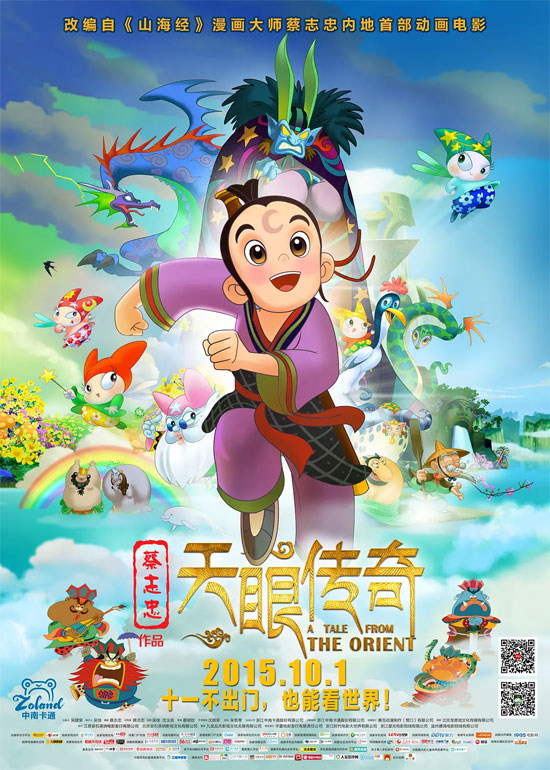Film Name: 天眼传奇 / A Tale From The Orient

This marks the first animated film by cartoonist Tsai Chih-chung produced on the mainland. The design of many characters and the effortless incorporation of traditional cultural allusions throughout the film bear Tsai’s distinctive stylistic signature. For fans of Tsai’s comics, the film remains worthwhile viewing to witness the revival of his iconic cartoon characters in animated form—at least most of the content carries a rich flavor.
The problem, however, lies precisely in the film’s overemphasis on the comic-like flavor of each individual story. When strung together, these segments fail to coalesce into a cohesive cinematic experience. The attempt to blend mythological figures and narratives rooted in Daoist culture—which holds strong collective resonance for the Chinese people—with the more regionally specific Sanxingdui culture feels particularly disjointed.
From the Daoist sacred peach at the outset, to the immortal murals of Yongle Palace, and then to figures like the Four Heavenly Kings, the Eight Giants, Lizi, the Heavenly God Erfu, and Cangjie—all carry a distinctly Chinese flavor. Yet when the dwarves, blue demons, and Sacred Heavenly Kings from the Sanxingdui civilization appear, they suddenly take on an overseas deity-like form. The interweaving of these two elements feels somewhat bizarre. Particularly confusing is the protagonist Tianyan’s journey, which shuttles between traditional Chinese elements and the “alien” Sanxingdui civilization, creating cognitive dissonance for viewers.
The Sanxingdui civilization dates back over 3,000 years. Yet the film’s narrative, set against the backdrop of this civilization’s demise, incorporates numerous cultural allusions from China’s imperial dynasties—such as borrowing the tale of Tao Yuanming’s “The Legend of Shangri-la.” The fisherman from Wuling in this legend lived during the Eastern Jin Dynasty, making him clearly an anachronism for the Sanxingdui era. While these somewhat disjointed allusions might hold up as standalone narratives, their amalgamation lacks persuasive coherence.
Though Tianyan serves as the protagonist, his role primarily functions as a narrative connector. While he employs wisdom to resolve others’ predicaments, these resolutions ultimately stem from the director’s deus ex machina. Tianyan’s inner journey remains largely unexplored, permeated by a fairy-tale mentality where all obstacles dissolve effortlessly. The woman who lured Tianyan into the mural never reappears—an unnecessary plot device that begs the question of her purpose. The film fails to explain how the ultimate sword aligns with Tianyan’s growth to unleash its full power. His pursuit remains technical mastery of martial arts, reaching at best a state of self-cultivation, yet lacking the fundamental motivation for wielding the sword: protecting something precious.
While we might adopt a flowing mindset when contemplating Zen or Daoist allusions, such an approach fails in cinematic storytelling. Not everyone possesses the philosophical heart to appreciate the beauty of philosophy through the form of flowing water. Instead, the outcome of such a flowing narrative often manifests as “heartlessness”—it becomes difficult to perceive any genuine emotion in the characters. As the Blue Demon King remarked upon reuniting with Tianyan, “Just a moment apart, and you’ve grown wings.” Perhaps even he sensed the plot had become overly formulaic.
One final gripe: for a film rooted in traditional Chinese culture, the interlude animations overflowing with Arabic numerals and skill-specific data sheets feel utterly incongruous—a jarring eyesore that betrays the film’s heritage.
Please specify:Anime Phone Cases » A Tale From The Orient 2015 Animation Film Review: Philosophical yet devoid of compassion